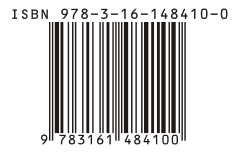Human-readable medium

A human-readable medium or human-readable format is a representation of data or information that can be naturally read by humans.
In computing, human-readable data is often encoded as ASCII or Unicode text, rather than presented in a binary representation. Virtually all data can be parsed by a suitably equipped and programmed computer or machine; reasons for choosing binary formats over text formats usually center on issues of storage space, as a binary representation usually takes up fewer bytes of storage, and efficiency of access (input and output) without parsing or conversion.
In most contexts, the alternative to a human-readable representation is a machine-readable format or medium of data primarily designed for reading by electronic, mechanical or optical devices, or computers. For example, Universal Product Code (UPC) barcodes are very difficult to read for humans, but very effective and reliable with the proper equipment, whereas the strings of numerals that commonly accompany the label are the human-readable form of the barcode information. In many jurisdictions, barcode labels used in retail shopping must also include a human-readable price on the merchandise.
With the advent of standardized, highly structured markup languages, such as Extensible Markup Language (XML), the decreasing costs of data storage, and faster and cheaper data communication networks, compromises between human-readability and machine-readability are now more common-place than they were in the past. In addition, these structured representations can be compressed very effectively for transmission or storage.
Human readable protocols greatly reduce the cost of debugging.[1]
Various organizations have standardized the definition of human-readable and machine-readable data and how they are applied in their respective fields of application, e.g., the Universal Postal Union.[2]
Often the term human-readable is also used to describe shorter names or strings, that are easier to comprehend or to remember than long, complex syntax notations, such as some Uniform Resource Locator strings.[3]
Occasionally "human-readable" is used to describe ways of encoding an arbitrary integer into a long series of English words. Compared to decimal or other compact binary-to-text encoding systems, English words are easier for humans to read, remember, and type in.[4]
See also
- Self-documenting code: source code that is both machine-readable and human-readable
- Machine-Readable Documents
- Machine-readable data
- Data (computing)
- Data conversion
- Hellschreiber
- Human–computer interaction
- Human factors
- Plain text
- quoted-printable
References
- ↑ RFC 3339 : "Date and Time on the Internet: Timestamps". section "5.2. Human Readability". 2002.
- ↑ "OCR and Human readable representation of data on postal items, labels and forms". Universal Postal Union.
- ↑ "Human-readable URLs". Plone Foundation. Retrieved 2009-10-01.
- ↑ RFC 1751 "A Convention for Human-Readable 128-bit Keys"